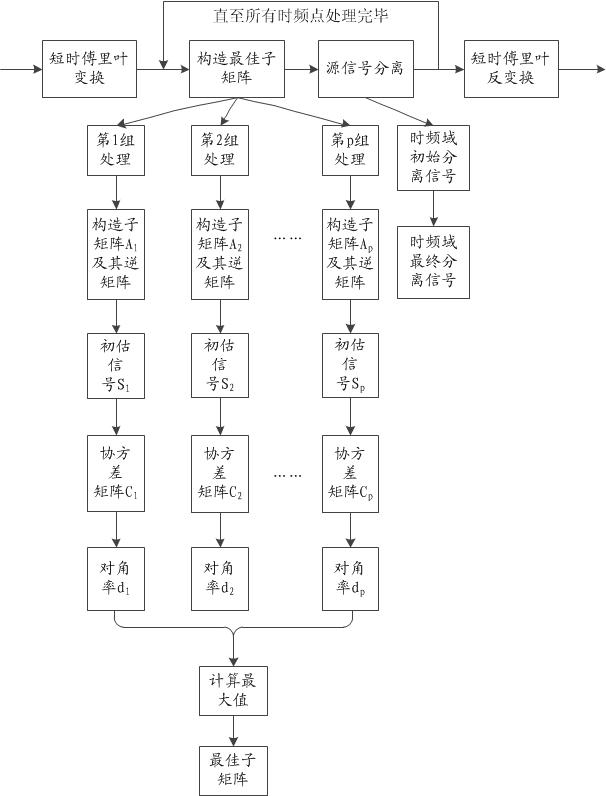Underdetermined blind source separation (UBSS) method based on maximum matrix diagonal rate
An underdetermined blind separation and diagonal rate technology, applied in speech analysis, speech recognition, instruments, etc., can solve problems such as poor separation quality, inconvenient processing of 0 norm, and noise sensitivity
- Summary
- Abstract
- Description
- Claims
- Application Information
AI Technical Summary
Problems solved by technology
Method used
Image
Examples
Embodiment 1
[0121] Select 4 voice signals of different speakers from the voice library as the source signal, take 50000 points respectively, and perform linear instantaneous mixing in the time domain. The mixing matrix is as follows:
[0122] A = 0.7875 0.6368 0.6117 0.4277 0.4161 0.4792 0.7146 0.7530 0.4545 0.6039 0.3391 0.5000
[0123] The absolute values of the determinants of the respective sub-matrices of the mixing matrix A are 0.0744, 0.0697, 0.0838, and 0.0815, respectiv...
Embodiment 2
[0129] One of the advantages of the present invention is that it lowers the requirement on the statistical characteristics of the source signal, and enables underdetermined separation of related source signals. Select one voice signal from the voice library, and then take different time periods of the voice to form four related source signals. The time-domain waveforms of the original four-way correlation signals are attached Figure 4 As shown in (a), the time-domain waveforms of the three-way observation signals after linear instantaneous mixing are shown in the attached Figure 4 Shown in (b), the time-domain waveforms of the four-way signals separated by the present invention are as attached Figure 4 (c) shown. The output signal-to-noise ratio of the separated signals is shown in Table 2.
[0130] Table 2 Four-channel correlation speech output SNR
[0131]
Embodiment 3
[0133] The invention can better solve the underdetermined separation of weak and sparse signals. The advantages of the present invention will be described below by taking white Gaussian noise with poor sparsity as an example. Select one path of Gaussian white noise and three paths of different speech signals from the speech library. The original time-domain waveforms of one channel of Gaussian white noise and three channels of speech signals are attached Figure 5 As shown in (a), the time-domain waveforms of the three-way observation signals after linear instantaneous mixing are shown in the attached Figure 5 Shown in (b), the four-way signal time-domain wave form that the present invention separates is as attached Figure 5 (c) shown. The output signal-to-noise ratio of the separated signals is shown in Table 3.
[0134] Table 3 One-way noise, three-way voice output signal-to-noise ratio SNR
[0135]
PUM
 Login to View More
Login to View More Abstract
Description
Claims
Application Information
 Login to View More
Login to View More - R&D
- Intellectual Property
- Life Sciences
- Materials
- Tech Scout
- Unparalleled Data Quality
- Higher Quality Content
- 60% Fewer Hallucinations
Browse by: Latest US Patents, China's latest patents, Technical Efficacy Thesaurus, Application Domain, Technology Topic, Popular Technical Reports.
© 2025 PatSnap. All rights reserved.Legal|Privacy policy|Modern Slavery Act Transparency Statement|Sitemap|About US| Contact US: help@patsnap.com



